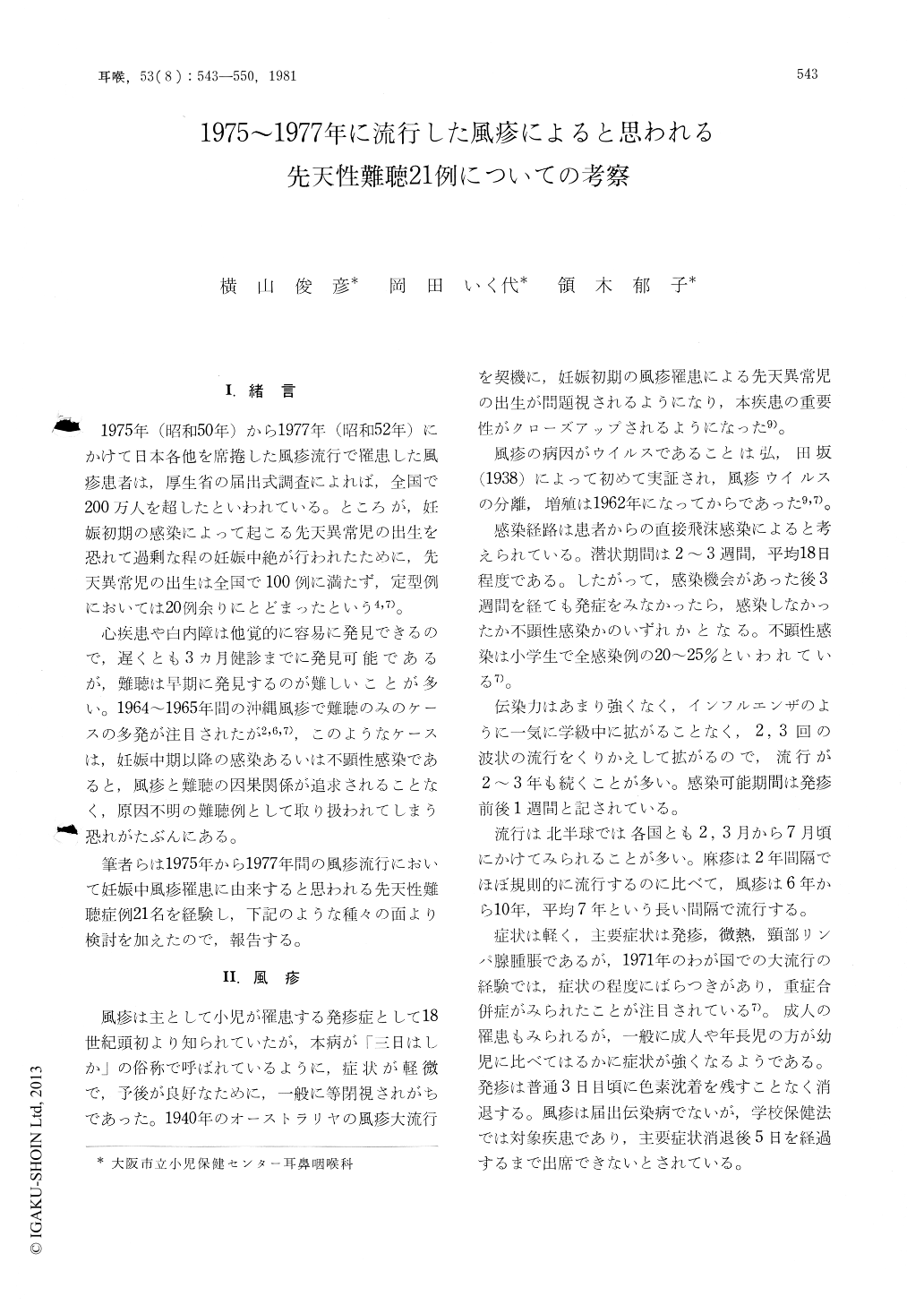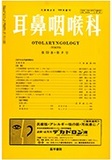Japanese
English
- 有料閲覧
- Abstract 文献概要
- 1ページ目 Look Inside
I.緒言
1975年(昭和50年)から1977年(昭和52年)にかけて日本各他を席捲した風疹流行で罹患した風疹患者は,厚生省の届出式調査によれば,全国で200万人を超したといわれている。ところが,妊娠初期の感染によって起こる先天異常児の出生を恐れて過剰な程の妊娠中絶が行われたために,先天異常児の出生は全国で100例に満たず,定型例においては20例余りにとどまったという4,7)。
心疾患や白内障は他覚的に容易に発見できるので,遅くとも3カ月健診までに発見可能であるが,難聴は早期に発見するのが難しいことが多い。1964〜1965年間の沖縄風疹で難聴のみのケースの多発が注目されたが2,6,7),このようなケースは,妊娠中期以降の感染あるいは不顕性感染であると,風疹と難聴の因果関係が追求されることなく,原因不明の難聴例として取り扱われてしまう恐れがたぶんにある。
Twenty-one children with congenital deafness probably due to maternal rubella infection in a 1975-1977 epidemic period were investigated in our department during a three-year period of 1977-1979.
Five children, with deafness associated with a variety of abnormalities, out of 21 were born from mothers who had rubella within the first three months of gestation, and all of them had profound deafness of the low frequencies up to O.5 kHzfound by BOA. However, 86.6% of other 15 children with deafness were born from mothers who had rubella during a period of the fourth and fifth months of gestation, and the group had various degrees of hearing loss ranging from 60 dB to 90 dB determined by air and bone conduction threshold audiometry.
It is difficult to conclude that children with deafness from mothers with rubella infection at the second trimister during pregnancy were estimated as having fetal rubella infection resulting in congenital deafness. The follow-up of these cases is needed to make the early diagnosis.

Copyright © 1981, Igaku-Shoin Ltd. All rights reserved.


